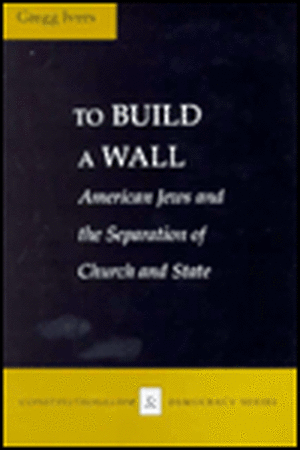To Build a Wall
Autor Gregg Iversen Limba Engleză Hardback – 31 mai 1995
To Build a Wall represents the first extensive study of the effect of Jewish interest groups on church-state litigation. Ivers carefully traces the evolution of the American Jewish Committee, the American Jewish Congress, and the ADL from benevolent social service agences to powerful organized interest groups active on all fronts of American politics and public affairs.
He argues that the ethnic, economic, and religious differences that led to the formation of competing Jewish organizations eighty years ago continue to drive a dynamic pluralism within the Jewish community, manifest in part in divergent approaches to litigation and public affairs.
Preț: 345.89 lei
Nou
Puncte Express: 519
Preț estimativ în valută:
66.18€ • 69.29$ • 54.76£
66.18€ • 69.29$ • 54.76£
Carte indisponibilă temporar
Doresc să fiu notificat când acest titlu va fi disponibil:
Se trimite...
Preluare comenzi: 021 569.72.76
Specificații
ISBN-13: 9780813915548
ISBN-10: 0813915546
Pagini: 272
Dimensiuni: 159 x 235 x 28 mm
Greutate: 0.59 kg
Editura: University of Virginia Press
ISBN-10: 0813915546
Pagini: 272
Dimensiuni: 159 x 235 x 28 mm
Greutate: 0.59 kg
Editura: University of Virginia Press
Textul de pe ultima copertă
To Build a Wall represents the first extensive study of the effect of Jewish interest groups on church-state litigation. Ivers carefully traces the evolution of the American Jewish Committee, the American Jewish Congress, and the ADL from benevolent social service agencies to powerful organized interest groups active on all fronts of American politics and public affairs. He draws extensively upon original sources and archival materials from each organization, personal interviews over a five-year period, as well as the personal files and papers of Leo Pfeffer, the lead counsel or amicus curiae in nearly every establishment clause case from the late 1940s through the early eighties. Ivers concludes that organized interests can and do have critical influence in the legal process, but that organizational needs and external demands result in a more ad hoc, less planned approach to law and litigation than much previous scholarship has suggested. Ivers also argues that the ethnic, economic, and religious differences that led to the formation of competing Jewish organizations eighty years ago continue to drive a dynamic pluralism within the Jewish community, manifest in part in divergent approaches to litigation and public affairs.
